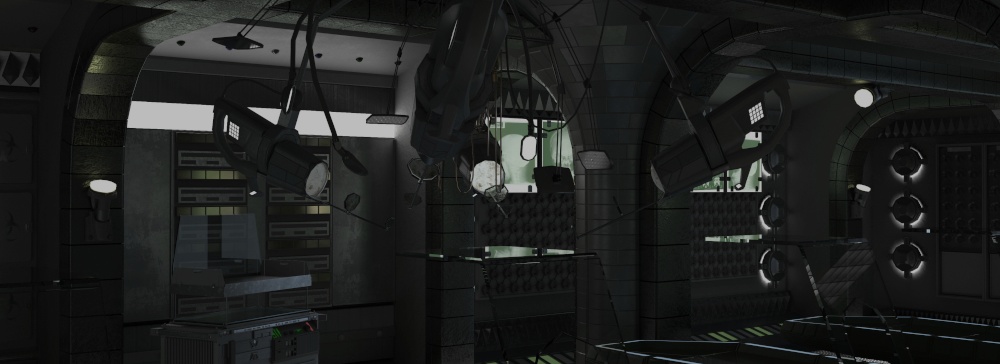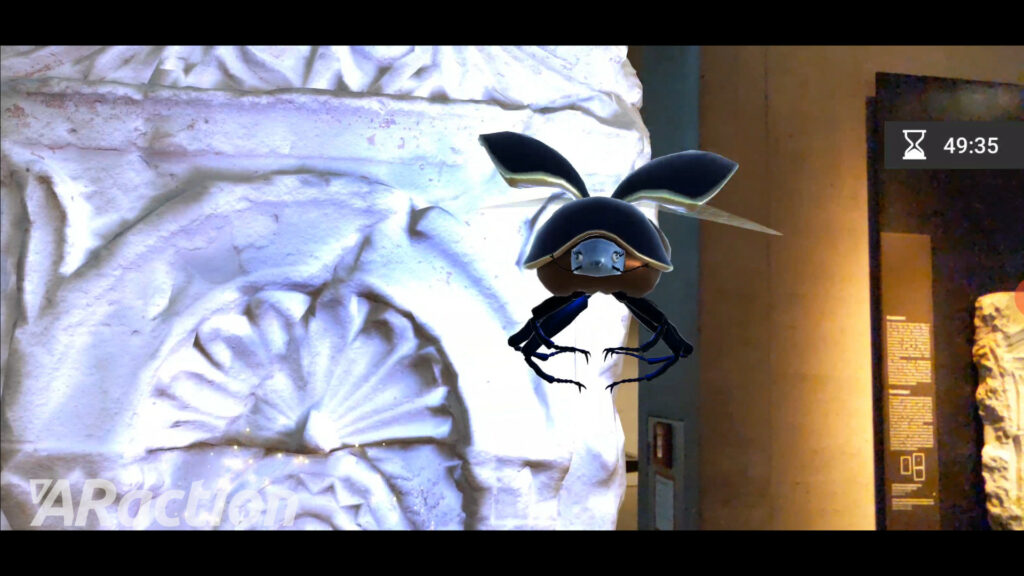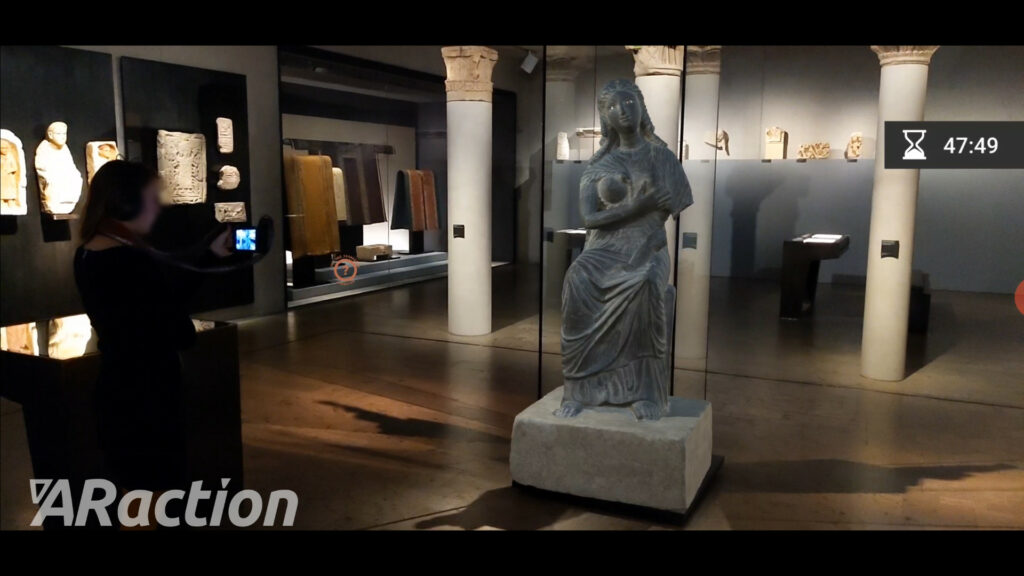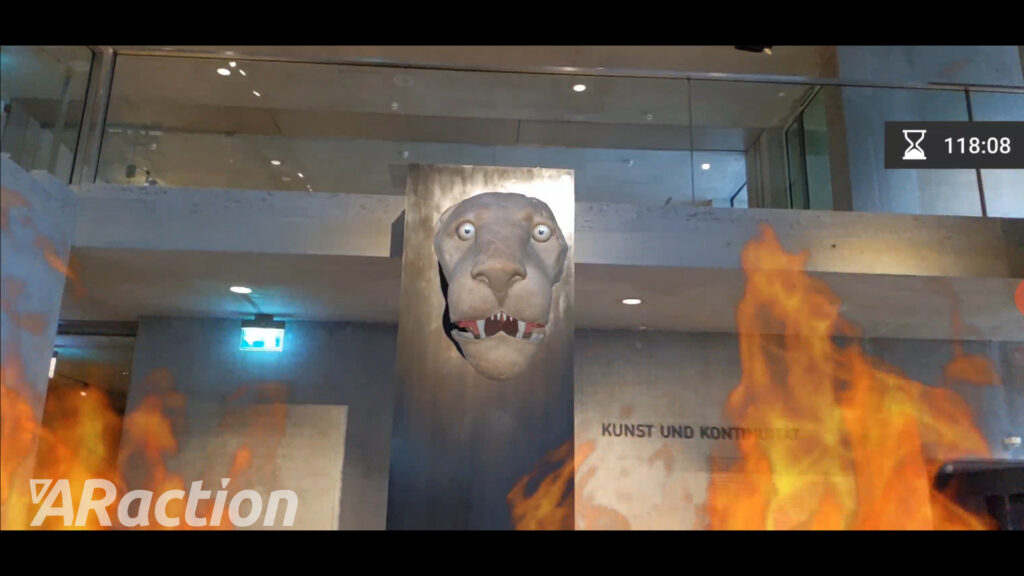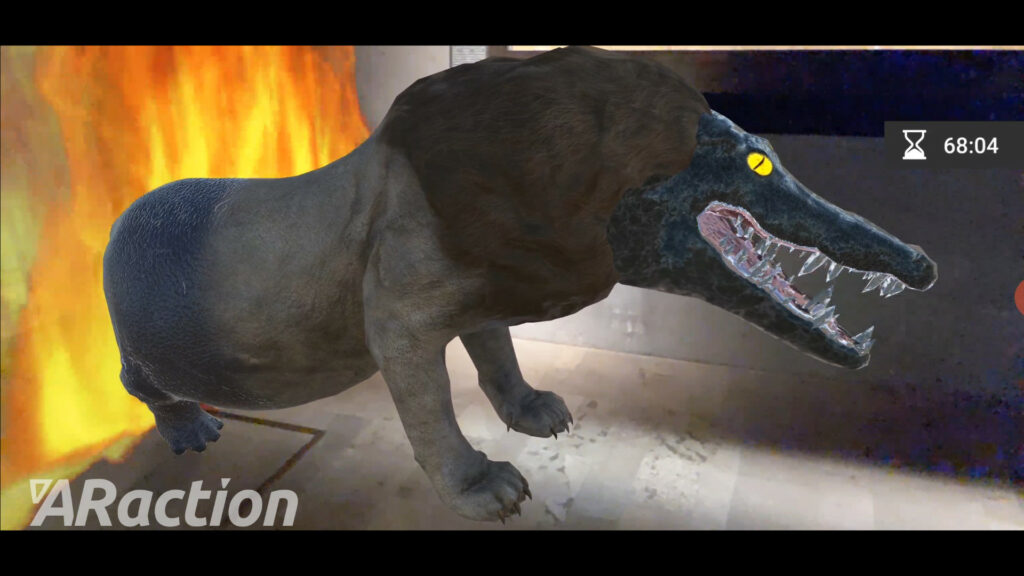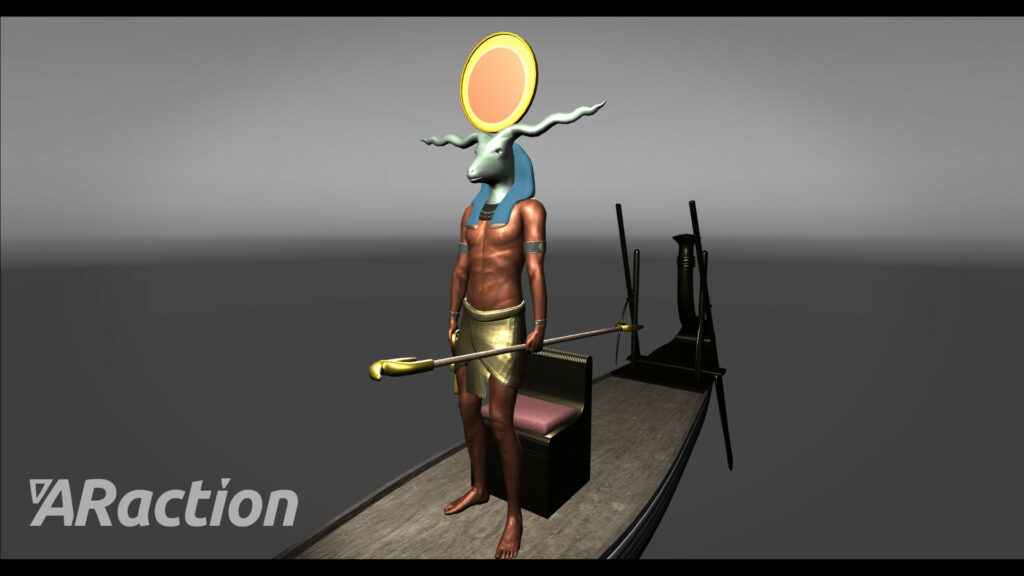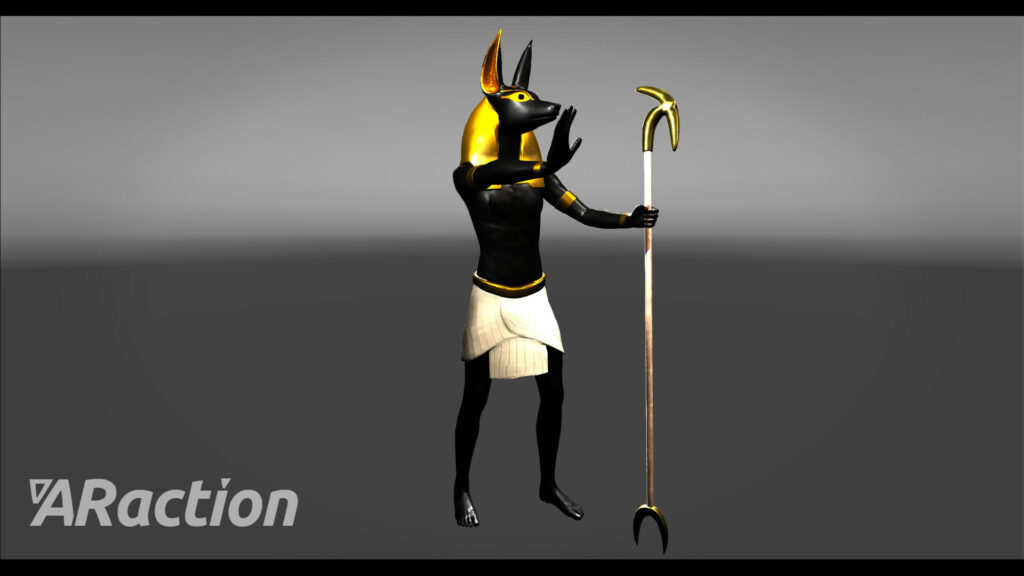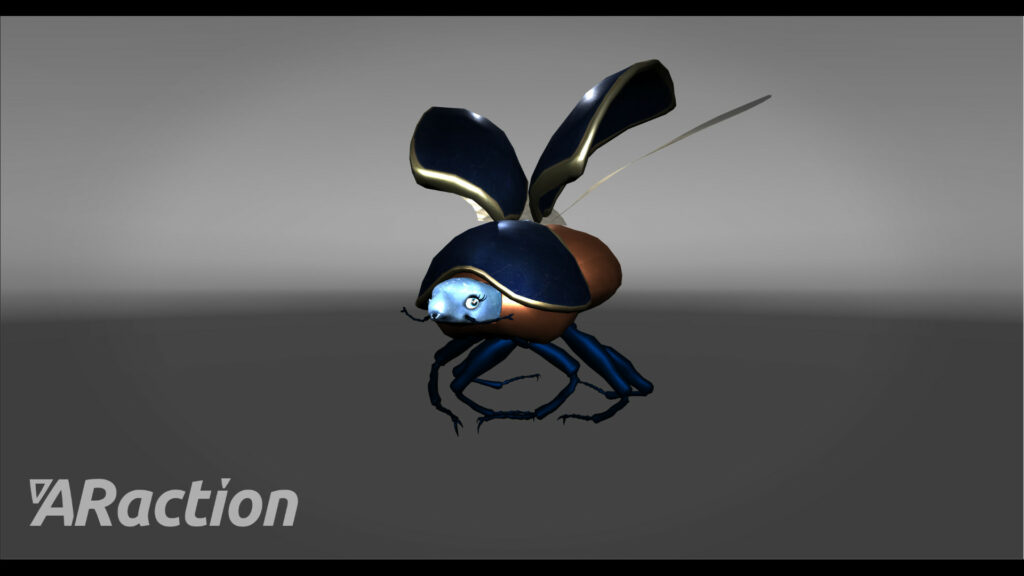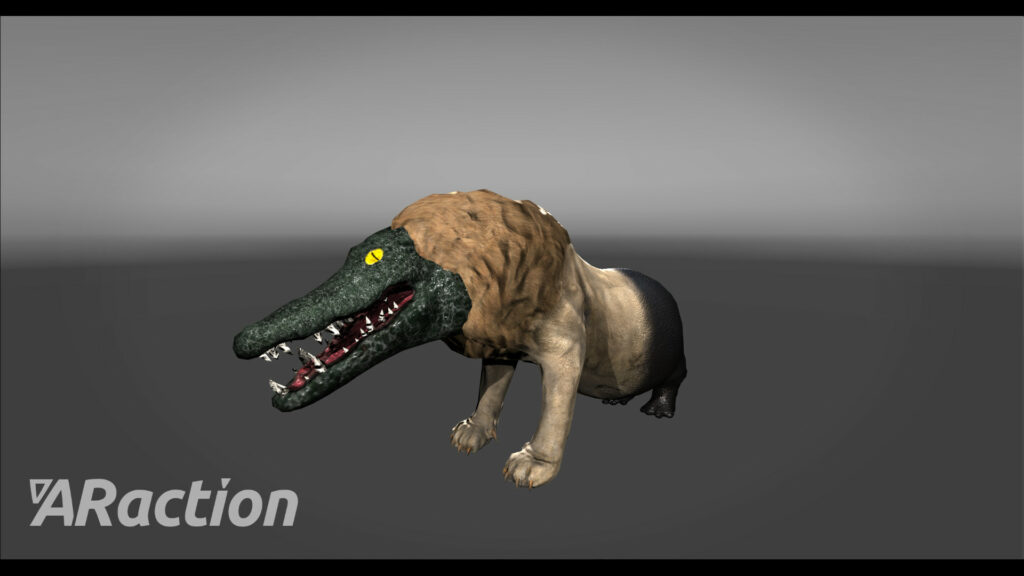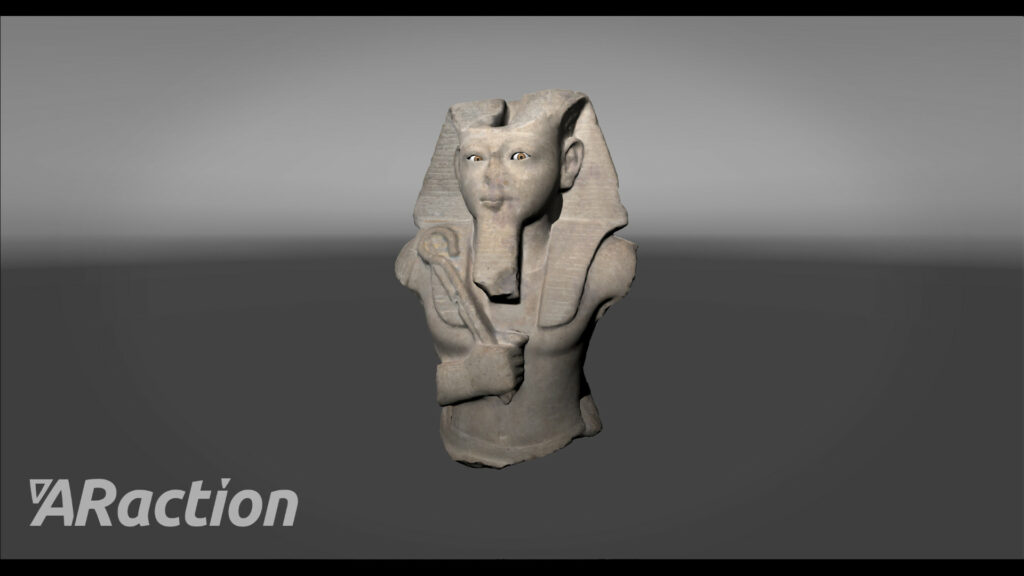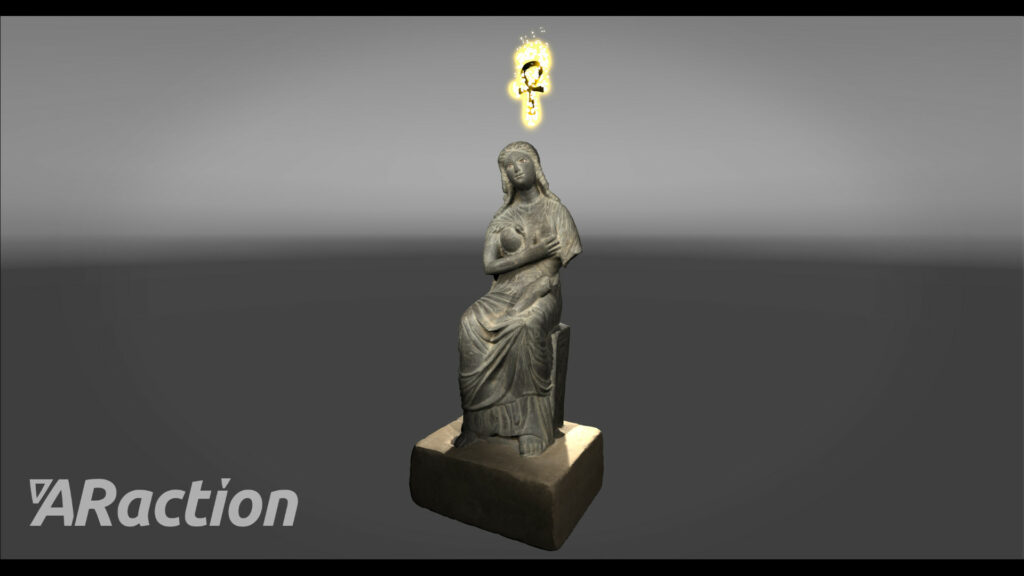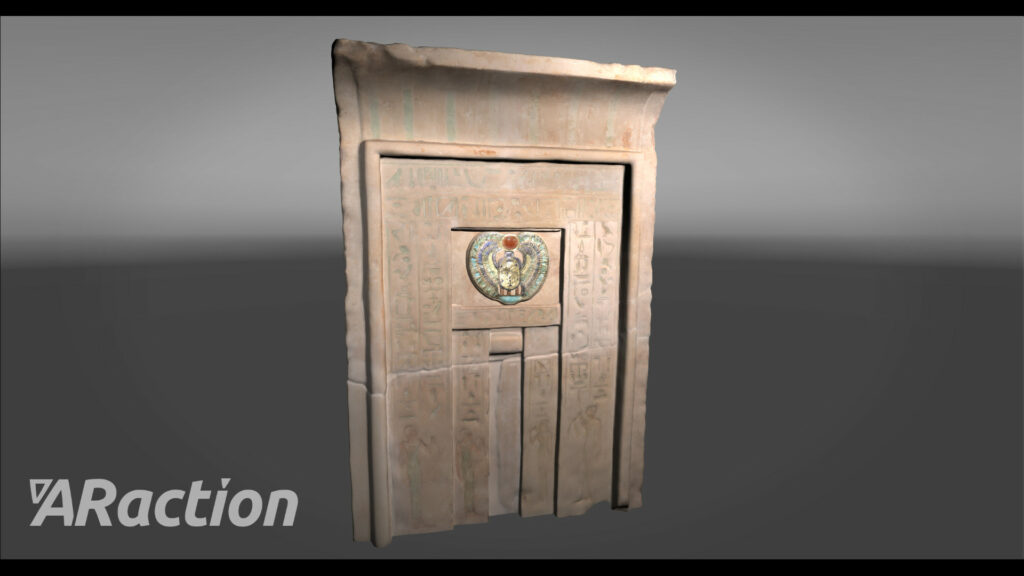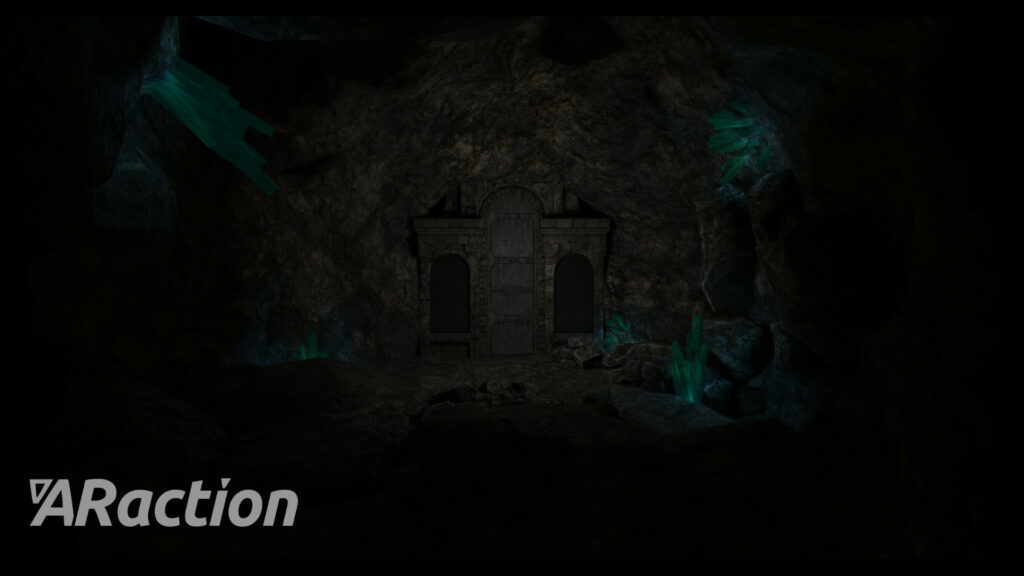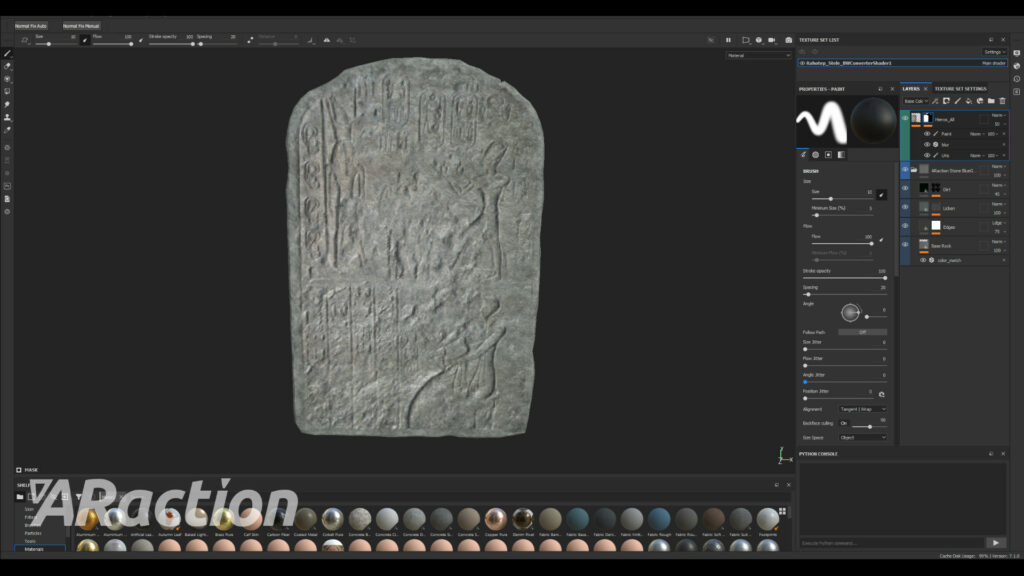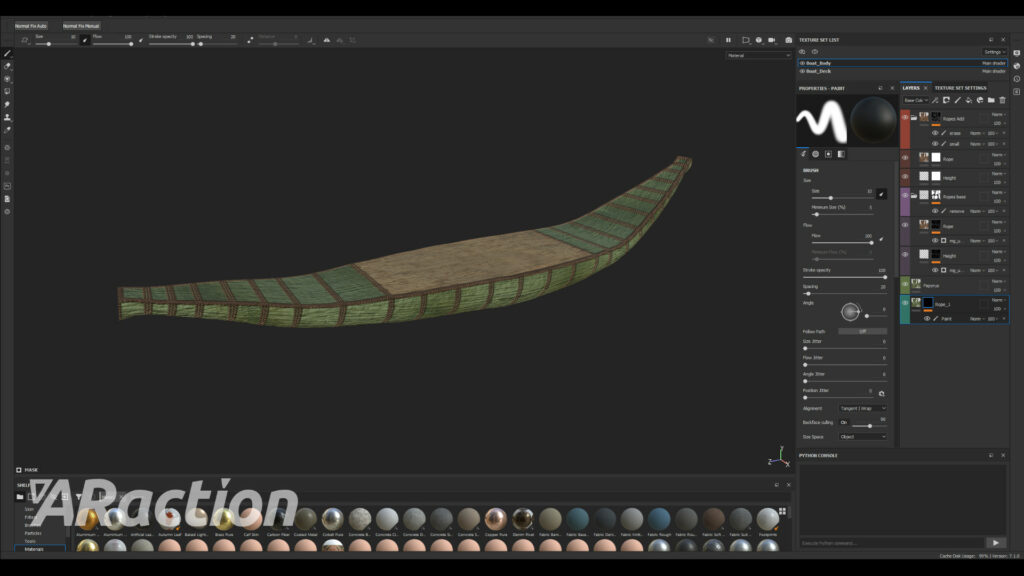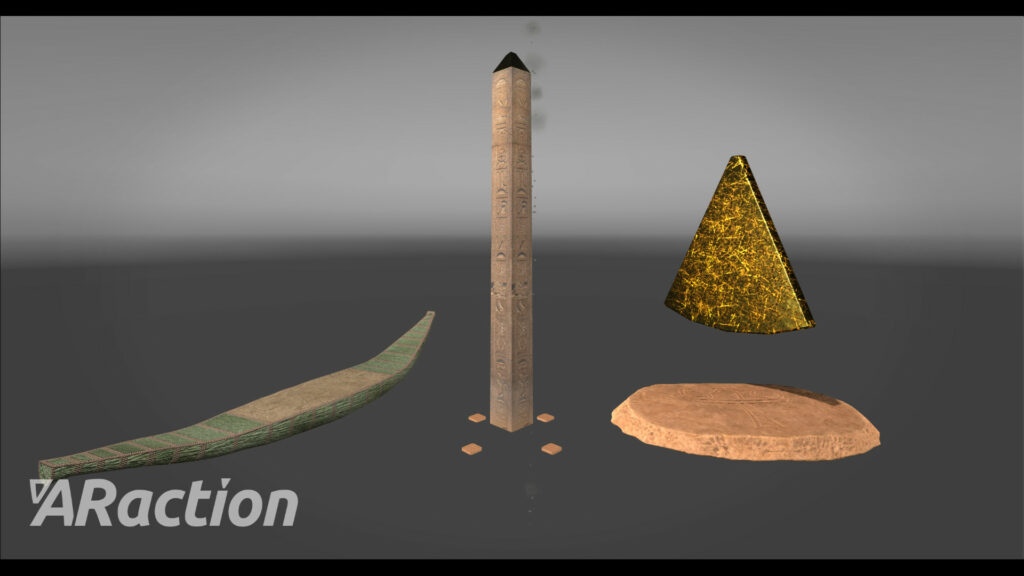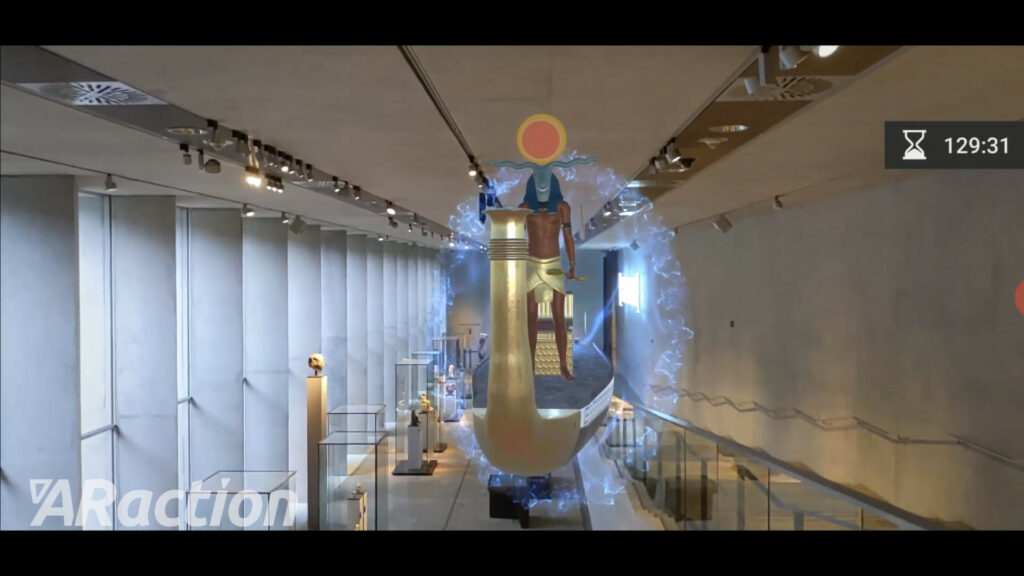
TLDR
Here I present you some of my most recent work for ARaction GmbH. We created an augmented reality game called Die Nachtfahrt der Sonne – Ein Augmented Reality Adventure for the Staatliches Museum Ägyptischer Kunst, located in Munich, Germany. The game has been created using Unity 2018 for Google ARCore devices. Germanys Film News Bayern already published a story about the game, which you can read here.
In this project, I was responsible for:
• Gameplay and asset programming
• 3D design and texturing
• Rigging, skinning and animating
• Level design
• SFX and audio design
• Quality assurance
• Contributing game design ideas
Lead game design and additional work by Matthias Lindner, CEO ARaction GmbH.
Please note we also used assets from 3rd party providers and altered them to fit the games requirements.
WARNING: the material on this page does contain some visual spoilers for the game!
About The Game
Die Nachtfahrt der Sonne is an augmented reality multiplayer game set in the halls of the Staatliches Museum Ägyptischer Kunst in Munich, Germany. You and your friends take on the role of explorers on an adventurous journey through the museum. You will witness exhibits come to life, you will solve riddles and accompany Re, the god of the sun, on his dangerous path through the underworld.
My Responsibilities
I was hired by ARaction GmbH as a game designer in June 2019, when the concept for the game was almost complete. My task was to turn the concept into a game, using mainly Unity 2018, Maya LT, Substance Painter and the ARaction-app.
Requirements Analysis
For each level which had to be created, I first did some requirements analysis (i.e. what assets are needed, what functions need to be implemented for the assets, can we get something from the asset store or do we have to create something on our own, etc.).
Creating The Assets
Once requirements analysis was done, I started working on the assets. Basically, it came down to four categories:
Humanoid Characters
All humanoid characters have been created in Character Creator 3 with some additional work in Maya LT and Substance Painter. I first created some simple male character models in Character Creator 3. Then I added some clothing, which I did either create myself or it was based on meshes from the asset store. Texturing was almost exclusively done in Substance Painter. I then added some skinning to the clothes in Character Creator 3 and exported the character to Unity. In Unity, I then had to add animations to the characters. I did use a lot of animations from Mixamo and edited them to better fit the requirements of the characters if needed.
Animal Characters
All animal characters in the game are based upon 3rd party assets which we aquired from different asset stores. For most of the assets, I tweaked the meshes and animations or created new animations from scratch in Maya LT or Unity (using the UMotion-Plugin). For one of the animal characters I had to combine meshes, rigs, skins and animations from two different animal-assets, which was equally challenging and informative. Texturing the animal characters was again almost exclusively done in Substance Painter.
3D-Scanned Exhibits
3D-Scans of the museums exhibits were created by a 3rd party company. I used those scanned meshes for creating the assets. Most of the 3D-scans were quite heavy in polycount (1 Mio. verts and above), so I was using Meshlab to reduce the polycount to a suitable amount while keeping the existing UVs intact. I then did some edits to the meshes in Maya LT (like creating holes for mouth and eyes, adding teeth, etc.) before I started rigging and skinning the assets. Texture-edits were done in Substance Painter and Photoshop if neccessary.
Props & Environments
Of course we also needed a lot of different props and some environments for creating the levels. Again, these were either 3rd party assets with some additional edits or created from scratch in Maya LT with texturing done in Substance Painter if neccessary. Since we were creating a game for mobile-plattforms, having a good performance was crucial. So, when using 3rd party assets, I sometimes was using one of the LOD-meshes instead of the main mesh of an asset, to save performance.
SFX- and Audio Design
SFX- and audio design was done using a combination of free sound samples and samples I created on my own, using a fieldrecorder and software synthesizers like HELM. I was mainly using Ardour and Audacity to mix and edit the sounds, with some additional work in Adobe Audition. For most of the background-ambience, I was stretching random sounds and adding synth-textures to achieve a spherical, mystical atmosphere.
Gameplay Programming
After the assets had been created (including textures, animation, basic sfx, etc.), I brought everything together in Unity and wrote controller-scripts to connect everything. Also, I was responsible for most of the gameplay-programming for the levels. This was done using Unity 2018 and MS Visual Studio. Please note: Creating and maintaining the ARaction-app was done by the ARaction-development-team.
Level Design
For designing the levels, I was both using Unity 2018 as well as the ARaction-app. Since the ARaction-app is basically the host for all AR-related features of the game, I was designing and testing basic parts of the levels in Unity before finalizing everything in the ARaction-app. This included placing the digital assets right where the real-world exhibits are located.
Quality Assurance
QA was done using a combination of AR-ready android-smartphones and multiple PCs. Because of the unique nature of the ARaction-app and the AR-medium in general, I had to come up with a couple of creative solutions for testing on both the android devices and the PCs simultanously. QA for this project included testing and fixing assets and levels of the game as well as testing and bugreporting regarding the ARaction-app.
The Final Product
Below you will find two videos showcasing the final game. The first video is a teaser-trailer with some scenes taken from various parts of the game. In the second video you will see actual gameplay-demos from some of the levels. Of course, I do recommend checking out the full game at the Staatliches Museum Ägyptischer Kunst!

